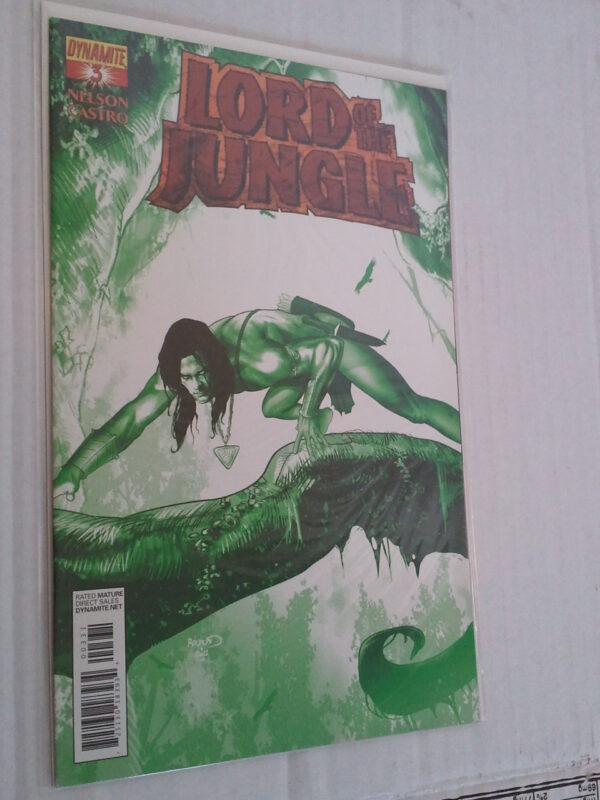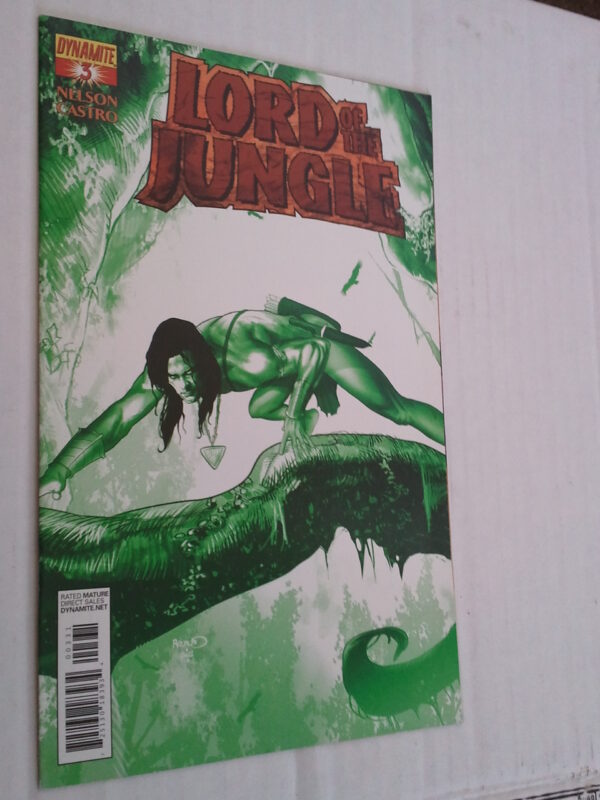Lord of the Jungle 3 NM (15-copy Renaud Jungle Green incentive cover) Tarzan
$89.99
Description
LORD OF THE JUNGLE #3 (15 COPY PAUL RENAUD JUNGLE GREEN INCENTIVE COVER)
Dynamite!
Writer: Arvid Nelson
Artist: Roberto Castro
Panthers, crocodiles, snakes, pirates… Jane Porter and her fellow castaways have been through a lot since they were stranded in the African jungle. But now they face an even greater threat – the vicious troop of apes who killed Lord Greystoke over twenty years ago. All the while, ‘White Skin’, a mysterious wild man, lurks just out of sight. Whether he is a friend or an enemy remains to be seen. And what is his connection to the seaside cabin Jane and her companions have come to call home? Find out in Lord of the Jungle #3: The Call of the Primitive!
In this issue, writer Arvid Nelson continues telling a great story that he started two issues ago. Yes, it’s origin-like, but not completely an origin, if that makes any sense. It will when you read the book.
The thing I loved about this book is that it’s got everything you want in a Tarzan comic. Tarzan swinging from vines, battling jungle creatures, saving people that have NO business being in the jungle, and more. There’s an interesting mystery going on, too. Nelson has given the answer to the audience, but I get the feeling he hasn’t given them all of the mystery.
Wow, Roberto Castro, just…wow. I remember being impressed with the artwork on the first issue, but this issue is better by leaps and bounds! And again, the first issue was not too shabby by any means. He’s got a real grasp of anatomy. And I mean that in EVERY sense of the word. Human, animal, skeletal, he draws it all this issue. His jungle scenery looks deadly accurate, but you’ll have to take that with a grain of salt, as I’ve never actually BEEN to a jungle.
This December, Tarzan swings back into action in “Lord of the Jungle” from Dynamite Entertainment. Written by “Rex Mundi” creator Arvid Nelson with art by Roberto Castro, the upcoming Tarzan story heavily follows the original story of author Edgar Rice Burroughs — the man responsible for not only the creation of Tarzan, but for iconic fantasy character John Carter, Warlord of Mars. This will be Dynamite’s second Burroughs adaptation written by Nelson, but the first to star a version of Tarzan heavily influenced by Burroughs’ original work. Although the book is called “Lord of the Jungle” due to the Burroughs estate keeping a tight rein on the Tarzan name, this book is all Tarzan, all the time.
Burroughs’ original tale follows the escapades of John Clayton, a man adopted by apes after his parents are killed by the savage ape king Kerchak. Called “Tarzan” by the apes, Clayton teaches himself to read through books in his parents’ cabin and becomes a skilled hunter, eventually usurping Kerchak as king of the apes. The rest of the story sees Tarzan take his revenge on a tribe of settlers for killing his adoptive ape mother, Kala, and gradually reintroduced to society with the appearance of Jane Porter and French Naval Officer Paul D’Arnot.
Arvid Nelson explained the nuts and bolts of the book to CBR News, recreating the mythology of Tarzan, adapting two Burroughs stories, the challenges of adapting literature to comics and how this particular adaptation will be the closest to the original story in years.
Arvid, first off, this is a book about Tarzan that’s not actually called “Tarzan.” How were you able to get around the rights issues at play, and is this something you’ve had to make a conscious effort to work around?
Arvid Nelson: It really hasn’t been an issue at all! My understanding is the title is the only thing we need to be mindful of. As for the story, I’m just trying to stay as true to the original as possible.
What’s the general story you’ve got set up for the first arc and which other characters from the Burroughs stories might readers see?
Arvid Nelson: Tarzan is the center of the story. This is the beginning of his myth, the world’s first superhero. But the people around him are important, too — Jane, of course, and a French naval officer named d’Arnot are the hammer and anvil that make Tarzan Tarzan.
There have been numerous Tarzan adaptations over the years in pulp fiction and comics — what source material have you been drawing from for your version of the character?
Arvid Nelson: The adaptations I’ve seen are all successful to varying degrees, but they’re not influencing this version. They’re either too serious or too kooky.
You mentioned in the press release you were “surprised at how little you knew about him.” What did you uncover in your research of the original work that you think will be surprising to readers and how did it factor in to your scripts?
Arvid Nelson: I’d always considered him to be a muscle-bound goon swinging from vines and thwacking into trees, but there’s so much more to him than that. The jungle is his savage garden of Eden. His story doesn’t begin until that Eden is threatened.
How closely will this story follow the plot of Burroughs’ original stories? Did you stick pretty close to his vision or were you able to draw from some other, more contemporary interpretations as well?
Arvid Nelson: One of the unfortunate things about the original novel is the racism. It goes deeper than being superficially “un-PC.” I’m not going to judge Burroughs — he lived in a different time, blah blah. But I felt obligated to re-imagine certain parts of the original. I’m actually surprised at how little it changes the underlying story.
Obviously, this is a great chance for new readers to get introduced to the amazing Tarzan character Burroughs created, but what about longtime fans of the original stories? What’s in this book for them?
Arvid Nelson: The adaptations I’ve seen diverge so violently from the novel that it’s not really even the same story. We’re making changes as needed, but there’s really no point in fixing something that’s not broken. So I hope new and seasoned readers alike will take to what we’re doing.
This is not the only Burroughs story you’re working on — “Warlord of Mars” is also getting your treatment following the adventures of John Carter. What has it been like adapting Burroughs’ two most well-known properties?
Arvid Nelson: I actually didn’t know a lot about Burroughs before taking up “Warlord of Mars.” To my shame. It’s similar to how I felt when I got into Black Sabbath — for some reason, I never really listened to them until a few years ago. It’s like a hole in the sky that opened up and sucked me in.
How did your work on “Warlord of Mars” help inform your time on “Lord of the Jungle?”
Arvid Nelson: In both Jungle and Warlord, I do my best to capture the flavor of Burroughs’ dialog, even if I can’t transcribe it literally. I’ve got lots of practice now, so I’d better know what works!
Near mint, 1st print. Bagged & Boarded.
Related products
-
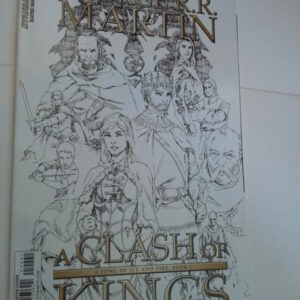
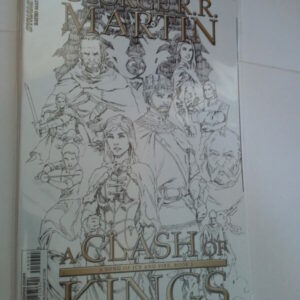
George R R Martin’s A Clash of Kings # 4 Mel Rubi 1:15 b&w Incentive Cover HBO N
$129.99 Add to cart -

Insane Clown Posse Pendulum 9 NM Chaos Comics Polybagged w/ CD ICP Jesse McCann
$96.99 Add to cart -
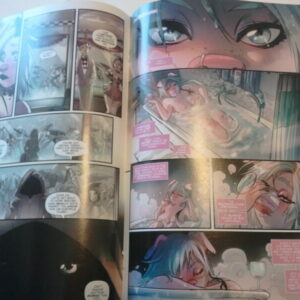
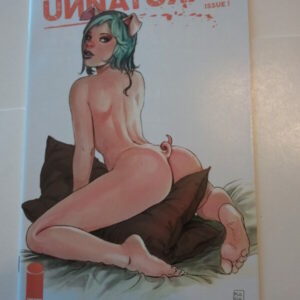
Unnatural # 1 NM Image Comics Milo Manara Variant Cover Mirka Andolfo 1st print
$59.99 Add to cart -
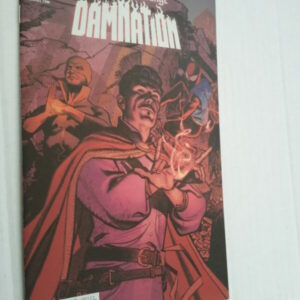

Doctor Strange Damnation 1 NM Variant Connecting Cover Smallwood Multiverse Mad
$89.99 Add to cart
